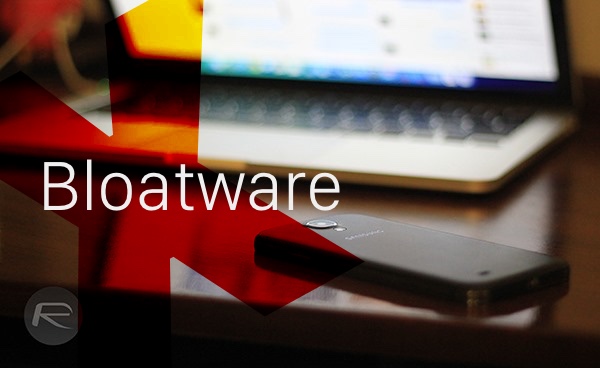The good fight against bloatware is nothing new. For years now, Android smartphones and tablets have been struggling under the weight of the sheer amount of bloatware that has crippled them in one way or another. Shoehorned onto smartphones in particular by the hardware makers as well as the carriers that allow them onto their networks, bloatware has been around for far longer than we would like to admit. And it’s not just a mobile problem.
Personal computers have been found to come packed to the gills with bloatware in some shape or form. Be it software that silently sits and monitors what you are doing or apps that come bundled with a new machine as part of a deal with the manufacturer but stubbornly refuse to die when users try to uninstall it, bloatware on the desktop is a very real problem indeed. Anyone who thinks bloatware is merely an evil that has its claws in smartphones and tablets clearly hasn’t been paying attention.
It’s time it stopped.

You don’t have to go too far back in recent history to see why hardware makers should stick to putting solid software onto their devices without tinkering with, or adding things to, it. The recent news that over 600 million Samsung Galaxy S devices are wide open to nasty shenanigans, thanks to the inclusion of Swift third-party keyboard and the way the whole shebang was put together, should be enough to give most pause. In this case it wasn’t Swift’s fault because the version available on Google Play Store or for that matter on Apple’s App Store is free of the vulnerability Samsung devices are affected to. That’s because only the Samsung version of Swift keyboard which is bundled (read: bloatware) by default on all Galaxy devices including the latest Galaxy S6 series has this vulnerability.
Just a few months ago, back in February, we told you about Superfish. Adware that shipped as part of Lenovo’s computers, Superfish injected its own ads into browser search results and that wasn’t the worst of it. Thanks to a self-signed certificate, it was even able to snoop private, supposedly secure connections in order to do its business. Lenovo ended up with egg on its face, but it wasn’t enough.

At this point, bloatware needs to go the way of the dodo, and fast. Back need to come the days of computers coming pre-installed with Windows and if you’re lucky, the drivers for the printer it came bundled with. Google’s Nexus range of devices looked to have started the movement, but it seems people didn’t want to give up good specs, in case of Nexus 5, or premium price, in case of Nexus 6, for vanilla Android. If manufacturers can load your new smartphone or computer with their own software doing who-knows-what, then devices are cheaper. That’s good for consumers, until it turns out their keyboard opens their device to untold problems or their computer starts filling their search results with ads.
Bloatware may not be going away today, and it may survive tomorrow as well. But let’s make sure it’s gone the day after, please.
You can follow us on Twitter, add us to your circle on Google+ or like our Facebook page to keep yourself updated on all the latest from Microsoft, Google, Apple and the web.

